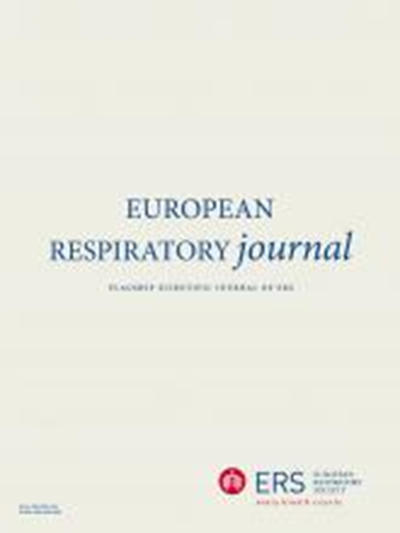国际间质性肺炎多学科分类更新:ERS/ATS声明
IF 21
1区 医学
Q1 RESPIRATORY SYSTEM
引用次数: 0
摘要
2013年美国胸科学会/欧洲呼吸学会关于特发性间质性肺炎分类的声明描述了特发性间质性肺炎的6种主要亚型和2种罕见亚型,并承认了无法分类的疾病。目的:更新2013年间质性肺炎的分类。方法5位联合主席确定了一个由32名该领域专家和2名有实际经验的个人组成的委员会。文件的编制得到了一系列视频会议的支持,首先包括全体委员会,然后是被指派起草文件具体部分的小组。分类方案是经协商一致制定的。结果多学科专家委员会确定了间质性肺炎分类的四个主要进展:(1)特发性间质性肺炎扩展到包括继发原因;(2)确定新的亚类和更新的术语,包括增加细支气管中心性间质性肺炎作为主要类型,从急性间质性肺炎转变为特发性弥漫性肺泡损伤,从脱屑性间质性肺炎转变为肺泡巨噬细胞肺炎;(3)间质性和肺泡充盈性疾病的亚分类,间质性疾病进一步亚分类为纤维化和非纤维化;(4)在患者评价和管理中对诊断置信度的考虑。委员会还提供了潜在分子工具现状的全面更新,并确定了未来的研究重点。结论:这一更新建立在以前的分类方法的基础上,描述了过去十年间质性肺炎分类的主要进展。本文章由计算机程序翻译,如有差异,请以英文原文为准。
Update of the International Multidisciplinary Classification of the Interstitial Pneumonias: An ERS/ATS Statement.
BACKGROUND
The 2013 American Thoracic Society/European Respiratory Society Statement on the classification of the idiopathic interstitial pneumonias described 6 major and 2 rare subtypes of idiopathic interstitial pneumonia, as well as recognising unclassifiable disease.
OBJECTIVE
The objective of this statement is to update the 2013 classification of interstitial pneumonia.
METHODS
Five co-chairs identified a committee of 32 experts in the field as well as two individuals with lived experience. Creation of the document was supported by a series of video meetings, first including the full committee and then subgroups assigned to draft specific sections of the document. The classification scheme was developed by consensus.
RESULTS
The multidisciplinary committee of experts identified four major advances to the classification of interstitial pneumonia: (1) expansion beyond idiopathic interstitial pneumonias to also include secondary causes; (2) identification of new subcategories and updated terms, including addition of bronchiolocentric interstitial pneumonia as a major pattern as well as changing from acute interstitial pneumonia to idiopathic diffuse alveolar damage and desquamative interstitial pneumonia to alveolar macrophage pneumonia; (3) subclassification of interstitial and alveolar filling disorders, with interstitial disorders further subclassified as fibrotic versus non-fibrotic; and (4) consideration of diagnostic confidence in patient evaluation and management. The committee also provided a comprehensive update on the status of potential molecular tools and identified future research priorities.
CONCLUSIONS
This update builds upon the previous classification approach by describing major advances in the classification of interstitial pneumonia over the last decade.
求助全文
通过发布文献求助,成功后即可免费获取论文全文。
去求助
来源期刊

European Respiratory Journal
医学-呼吸系统
CiteScore
27.50
自引率
3.30%
发文量
345
审稿时长
2-4 weeks
期刊介绍:
The European Respiratory Journal (ERJ) is the flagship journal of the European Respiratory Society. It has a current impact factor of 24.9. The journal covers various aspects of adult and paediatric respiratory medicine, including cell biology, epidemiology, immunology, oncology, pathophysiology, imaging, occupational medicine, intensive care, sleep medicine, and thoracic surgery. In addition to original research material, the ERJ publishes editorial commentaries, reviews, short research letters, and correspondence to the editor. The articles are published continuously and collected into 12 monthly issues in two volumes per year.
 求助内容:
求助内容: 应助结果提醒方式:
应助结果提醒方式:


